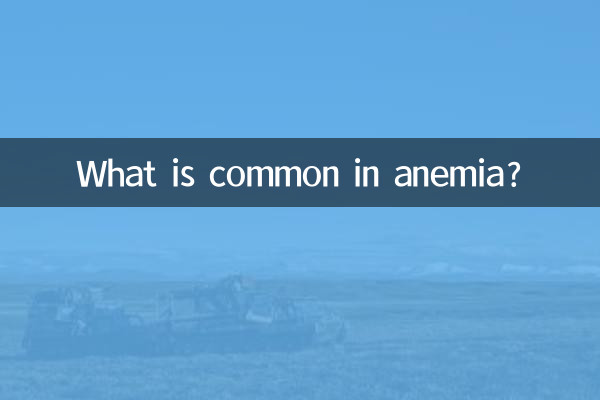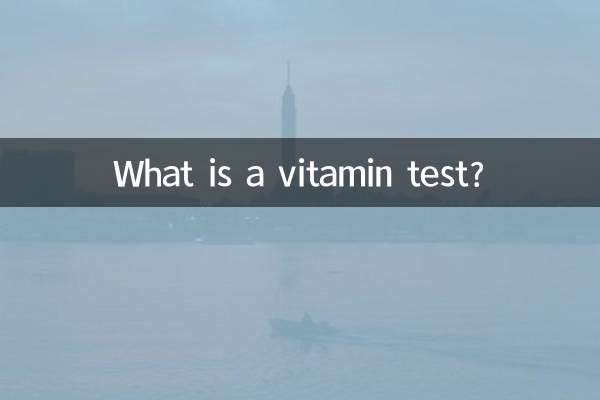What is common in anemia?
Anemia is a common health problem characterized by an insufficient number of red blood cells or hemoglobin in the blood, resulting in a decrease in the body's ability to supply oxygen. According to the World Health Organization (WHO), about 25% of the world's population suffers from anemia, with women, children and the elderly being the most susceptible groups. There are many causes of anemia, but the most common type is nutritional anemia, especially iron deficiency anemia. This article will analyze the common types of anemia, deficient nutrients and related hot topics.
1. Common types of anemia and deficient nutrients

There are many types of anemia, but the following three are the most common and are closely related to nutritional deficiencies:
| anemia type | lack of nutrients | Main symptoms |
|---|---|---|
| iron deficiency anemia | iron | Fatigue, dizziness, pallor, palpitations |
| megaloblastic anemia | Vitamin B12 or folic acid | Numbness of hands and feet, memory loss, glossitis |
| hemolytic anemia | Various nutrients (such as vitamin E) | Jaundice, splenomegaly, dark urine |
2. Hot topics related to anemia in the past 10 days on the Internet
By searching the hot topics on the Internet in the past 10 days, we found that the following anemia-related content has received widespread attention:
| hot topics | Main content | heat index |
|---|---|---|
| "Ranking of iron-supplementing foods" | Discuss which foods are high in iron and suitable for people with anemia | ★★★★★ |
| “Warning Signs of Vitamin B12 Deficiency” | Analysis of early symptoms and preventive measures of vitamin B12 deficiency | ★★★★☆ |
| "The relationship between anemia and chronic fatigue" | Explore how anemia causes fatigue and how to improve it | ★★★★☆ |
| “How Vegetarians Can Prevent Anemia” | Anemia prevention recommendations for vegetarians | ★★★☆☆ |
3. How to improve anemia through diet
Nutritional anemia can be improved by adjusting your diet. Here are dietary recommendations for different nutrient deficiencies:
| lack of nutrients | Recommended food | Recommended daily intake |
|---|---|---|
| iron | Red meat, animal liver, spinach, black fungus | Adult men 8mg, adult women 18mg |
| Vitamin B12 | Fish, eggs, dairy products, fortified cereals | 2.4μg |
| folic acid | Green leafy vegetables, legumes, citrus fruits | 400μg |
4. Prevention and precautions for anemia
Preventing anemia requires two aspects: lifestyle and diet:
1.balanced diet: Ensure adequate intake of iron, vitamin B12 and folic acid, especially for high-risk groups such as pregnant women, children and vegetarians.
2.Regular physical examination: Timely detection of anemia problems through routine blood tests, especially for people with long-term fatigue and dizziness.
3.Avoid distractions: Foods containing polyphenols such as coffee and tea may inhibit the absorption of iron, so it is recommended to eat them separately from iron-supplementing foods.
4.Reasonable supplement: Use iron or vitamin supplements under the guidance of a doctor to avoid side effects caused by excessive intake.
5. Conclusion
Although anemia is common, it can be prevented and improved through scientific diet and lifestyle adjustments. If you have symptoms of anemia, it is recommended to seek medical treatment in time to determine the cause and then provide symptomatic treatment. At the same time, paying attention to hot topics across the Internet can help you obtain the latest health information and better manage your health.

check the details

check the details